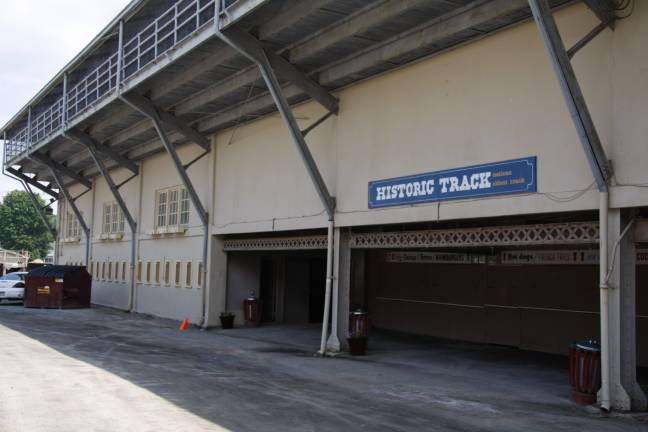Harness writers honor Historic Track board

GOSHEN — The Goshen Historic Track’s board of directors will receive the Excelsior Award from the Monticello-Goshen Chapter of the United States Harness Writers Association (USHWA) at its 54th annual awards banquet in November.
A USHWA statement calls the board "a group of local professionals from all walks of life and who are all volunteers and responsible for carrying on all business at the famed double-oval."
For many decades there was pari-mutuel racing at Historic Track, but that came to an end on Jan. 5, 1979, when the track was deeded to a not-for-profit corporation, the Goshen Historic Track. The board must make sure the corporation remains solvent. Of the 19 charter members, two — Graham Skea and John Bach Sr. — are still productive members of the 24-person board today.
"Good people and hard work over the years has made Historic Track a year-round facility," said the USHWA statement.
The track a year-round training center with a newly refurbished racetrack. The track offers matinees races in June and Grand Circuit races during a four- or five-day period centered annually around the Fourth of July.
The birth of harness racing
In the beginning there was horseracing, mostly under saddle, on the current site of Historic Track even before construction of the formal racetrack. The original race course was a one-third mile oval. Shortly before the outbreak of the Civil War, the track was enlarged to a half-mile track, and many champions, including Goldsmith Maid, competed there.
But 1894 marked the most important turning point in the track’s history with the appearance on the scene of railroad magnate Edward H. Harriman, starting a Harriman family involvement that continues to an extent even today.
"As part of 'then Roaring Grand' countless champions, including John R. Gentry, Joe Patchen, Greyhound, and Titan Hanover, and to mention all would be like a who’s who in harness racing equine world," the USHWA said. "And it should be noted that many champions wore the orange and blue colors of the Harriman family.
On June 24, 1873, President Ulysses S. Grant was in Goshen, staying at 210 Main St., where and he enjoyed the races from a barn behind the home.
Over the years countless celebrities, including James Cagney, were frequent guests at Historic Track. And some of America’s finest standardbreds raced over the clay racetrack. When rain was falling, races had to be cancelled.
A year-round track
In recent years top trackmen have worked on the oval and made it an all-weather racetrack, which not only curtailed the cancellation of race cards due to weather conditions but has allowed Historic Track to become a very good all-weather training facility.
"In recent years new barns have been added and others refurbished, and no one knows better than the Board of Directors on what it has take to make those additions and changes possible as a not-for-profit entity," the USHWA said.
Fundraising is a necessity, and the myth that Historic Track and the Harness Racing Museum and Hall of Fame are one is hard to dispel. Though each have different needs each entity needs funds to continue to exist. Actually each stands on its own and both work to raise funds.
Known forever as the Cradle of the Trotter, Goshen at one time housed two racetracks. The other track, Good Time Park, was a three-turn mile oval that housed the famed Hambletonian from 1930 through 1956.
The awards dinner will be held at the Fountains on Sands Road in Middletown on Sunday, Nov. 18. For more information call 845-794-4100.